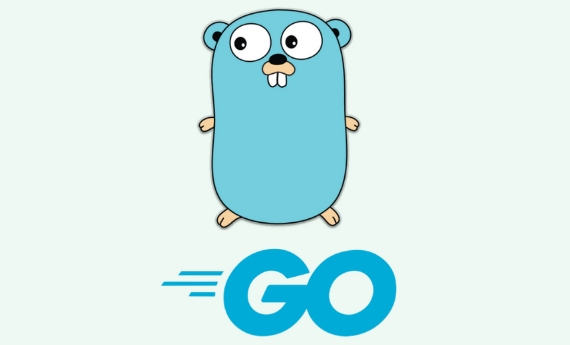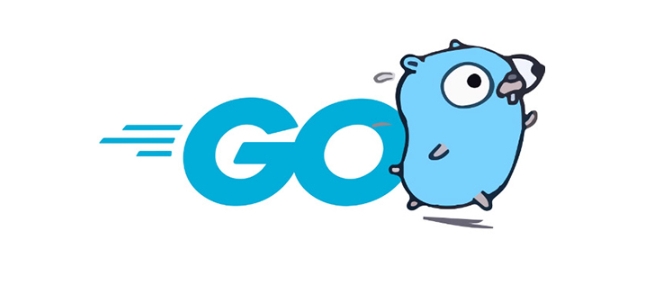In Go language, the use of pointers can be reduced by the following methods: 1. Use the value recipient definition method first, if there is no need to modify the receiver status or the structure is small; 2. The factory function returns the structure value instead of the pointer unless there is performance or modification requirement; 3. Use the value type in the structure field to avoid unnecessary pointer fields unless it is necessary to distinguish between "null value" and "unset"; 4. Use an immutable data structure, and use the original object by returning a new instance instead of modifying the original object; 5. If the value type support is required during the interface implementation, the value recipient definition method should be used. These practices help improve code readability, reduce null pointer errors, and enhance maintenance.

In Go, pointers are common and useful language features, but sometimes we want to avoid using them as much as possible to improve the readability of the code, reduce potential null pointer errors, or make the code easier to maintain. If you are also thinking about how to use less or even avoid pointers in Golang, here are some practical suggestions and methods.

1. Use value types instead of pointer receivers first
When defining methods, many people habitually use pointer receivers, such as:
func (p *Person) UpdateName(name string) {
p.Name = name
}But in fact, if you don't need to modify the status of the receiver, or the structure itself is small, you can use the value receiver:

func (p Person) DisplayName() {
fmt.Println(p.Name)
}This not only avoids the use of pointers, but also allows the code to express the intent more clearly: the value recipient means that this method does not modify the original object .
2. Return structure instead of structure pointer
When you define a constructor or factory function, many people will directly return the structure pointer:

func NewPerson(name string) *Person {
return &Person{Name: name}
}But unless you have special reasons (such as performance optimization, needing to modify the structure field, etc.), you can return the structure itself:
func NewPerson(name string) Person {
return Person{Name: name}
}In this way, the caller gets a value and does not need to worry about life cycle or null pointer issues. If a pointer is indeed needed in the future, the caller can get the address by himself.
3. Avoid unnecessary pointer fields
Sometimes we unconsciously define fields in a structure as pointer type, such as:
type User struct {
ID *int
Name *string
}This will cause a lot of trouble, such as constantly determining whether it is nil when accessing the field. Unless you have clear requirements (such as distinguishing between "empty string" and "unset"), it is recommended to use value types directly:
type User struct {
ID int
Name string
} If you do need "nullable" fields, consider using an encapsulation type like sql.NullString instead of using pointers directly.
4. Rationally use immutable data structures
Although Go is not a functional language, you can reduce your dependence on pointers by returning new values instead of modifying the original structure. For example:
func (u User) WithName(name string) User {
u.Name = name
return u
}This way, each call returns a new User instance instead of modifying the original object. Although it will bring some performance overhead, this writing method is safer and clearer in many business scenarios.
5. Pay attention to whether pointer implementation is required when using the interface
In Go, whether a type implements an interface depends on whether the method receiver is a value or a pointer. If you want a structure's value type to implement an interface, you need to use the value receiver to define the method.
For example:
type Speaker interface {
Speak()
}
type Dog struct{}
func (d Dog) Speak() {
fmt.Println("Woof!")
} In this way, the Dog value type can be assigned directly to the Speaker interface. But if the method is defined by the pointer receiver, only *Dog can implement the interface.
Basically that's it. Avoiding pointers does not mean giving up on it altogether, but rather making reasonable choices based on the actual scenario. Many times, using less pointers can make the code simpler, safer, and easier to understand .
The above is the detailed content of How to avoid using pointers in Golang?. For more information, please follow other related articles on the PHP Chinese website!

Hot AI Tools

Undress AI Tool
Undress images for free

Undresser.AI Undress
AI-powered app for creating realistic nude photos

AI Clothes Remover
Online AI tool for removing clothes from photos.

Clothoff.io
AI clothes remover

Video Face Swap
Swap faces in any video effortlessly with our completely free AI face swap tool!

Hot Article

Hot Tools

Notepad++7.3.1
Easy-to-use and free code editor

SublimeText3 Chinese version
Chinese version, very easy to use

Zend Studio 13.0.1
Powerful PHP integrated development environment

Dreamweaver CS6
Visual web development tools

SublimeText3 Mac version
God-level code editing software (SublimeText3)
 Is golang frontend or backend
Jul 08, 2025 am 01:44 AM
Is golang frontend or backend
Jul 08, 2025 am 01:44 AM
Golang is mainly used for back-end development, but it can also play an indirect role in the front-end field. Its design goals focus on high-performance, concurrent processing and system-level programming, and are suitable for building back-end applications such as API servers, microservices, distributed systems, database operations and CLI tools. Although Golang is not the mainstream language for web front-end, it can be compiled into JavaScript through GopherJS, run on WebAssembly through TinyGo, or generate HTML pages with a template engine to participate in front-end development. However, modern front-end development still needs to rely on JavaScript/TypeScript and its ecosystem. Therefore, Golang is more suitable for the technology stack selection with high-performance backend as the core.
 How to build a GraphQL API in golang
Jul 08, 2025 am 01:03 AM
How to build a GraphQL API in golang
Jul 08, 2025 am 01:03 AM
To build a GraphQLAPI in Go, it is recommended to use the gqlgen library to improve development efficiency. 1. First select the appropriate library, such as gqlgen, which supports automatic code generation based on schema; 2. Then define GraphQLschema, describe the API structure and query portal, such as defining Post types and query methods; 3. Then initialize the project and generate basic code to implement business logic in resolver; 4. Finally, connect GraphQLhandler to HTTPserver and test the API through the built-in Playground. Notes include field naming specifications, error handling, performance optimization and security settings to ensure project maintenance
 How to install Go
Jul 09, 2025 am 02:37 AM
How to install Go
Jul 09, 2025 am 02:37 AM
The key to installing Go is to select the correct version, configure environment variables, and verify the installation. 1. Go to the official website to download the installation package of the corresponding system. Windows uses .msi files, macOS uses .pkg files, Linux uses .tar.gz files and unzip them to /usr/local directory; 2. Configure environment variables, edit ~/.bashrc or ~/.zshrc in Linux/macOS to add PATH and GOPATH, and Windows set PATH to Go in the system properties; 3. Use the government command to verify the installation, and run the test program hello.go to confirm that the compilation and execution are normal. PATH settings and loops throughout the process
 Go sync.WaitGroup example
Jul 09, 2025 am 01:48 AM
Go sync.WaitGroup example
Jul 09, 2025 am 01:48 AM
sync.WaitGroup is used to wait for a group of goroutines to complete the task. Its core is to work together through three methods: Add, Done, and Wait. 1.Add(n) Set the number of goroutines to wait; 2.Done() is called at the end of each goroutine, and the count is reduced by one; 3.Wait() blocks the main coroutine until all tasks are completed. When using it, please note: Add should be called outside the goroutine, avoid duplicate Wait, and be sure to ensure that Don is called. It is recommended to use it with defer. It is common in concurrent crawling of web pages, batch data processing and other scenarios, and can effectively control the concurrency process.
 Go embed package tutorial
Jul 09, 2025 am 02:46 AM
Go embed package tutorial
Jul 09, 2025 am 02:46 AM
Using Go's embed package can easily embed static resources into binary, suitable for web services to package HTML, CSS, pictures and other files. 1. Declare the embedded resource to add //go:embed comment before the variable, such as embedding a single file hello.txt; 2. It can be embedded in the entire directory such as static/*, and realize multi-file packaging through embed.FS; 3. It is recommended to switch the disk loading mode through buildtag or environment variables to improve efficiency; 4. Pay attention to path accuracy, file size limitations and read-only characteristics of embedded resources. Rational use of embed can simplify deployment and optimize project structure.
 Go for Audio/Video Processing
Jul 20, 2025 am 04:14 AM
Go for Audio/Video Processing
Jul 20, 2025 am 04:14 AM
The core of audio and video processing lies in understanding the basic process and optimization methods. 1. The basic process includes acquisition, encoding, transmission, decoding and playback, and each link has technical difficulties; 2. Common problems such as audio and video aberration, lag delay, sound noise, blurred picture, etc. can be solved through synchronous adjustment, coding optimization, noise reduction module, parameter adjustment, etc.; 3. It is recommended to use FFmpeg, OpenCV, WebRTC, GStreamer and other tools to achieve functions; 4. In terms of performance management, we should pay attention to hardware acceleration, reasonable setting of resolution frame rates, control concurrency and memory leakage problems. Mastering these key points will help improve development efficiency and user experience.
 How to build a web server in Go
Jul 15, 2025 am 03:05 AM
How to build a web server in Go
Jul 15, 2025 am 03:05 AM
It is not difficult to build a web server written in Go. The core lies in using the net/http package to implement basic services. 1. Use net/http to start the simplest server: register processing functions and listen to ports through a few lines of code; 2. Routing management: Use ServeMux to organize multiple interface paths for easy structured management; 3. Common practices: group routing by functional modules, and use third-party libraries to support complex matching; 4. Static file service: provide HTML, CSS and JS files through http.FileServer; 5. Performance and security: enable HTTPS, limit the size of the request body, and set timeout to improve security and performance. After mastering these key points, it will be easier to expand functionality.
 Go select with default case
Jul 14, 2025 am 02:54 AM
Go select with default case
Jul 14, 2025 am 02:54 AM
The purpose of select plus default is to allow select to perform default behavior when no other branches are ready to avoid program blocking. 1. When receiving data from the channel without blocking, if the channel is empty, it will directly enter the default branch; 2. In combination with time. After or ticker, try to send data regularly. If the channel is full, it will not block and skip; 3. Prevent deadlocks, avoid program stuck when uncertain whether the channel is closed; when using it, please note that the default branch will be executed immediately and cannot be abused, and default and case are mutually exclusive and will not be executed at the same time.






